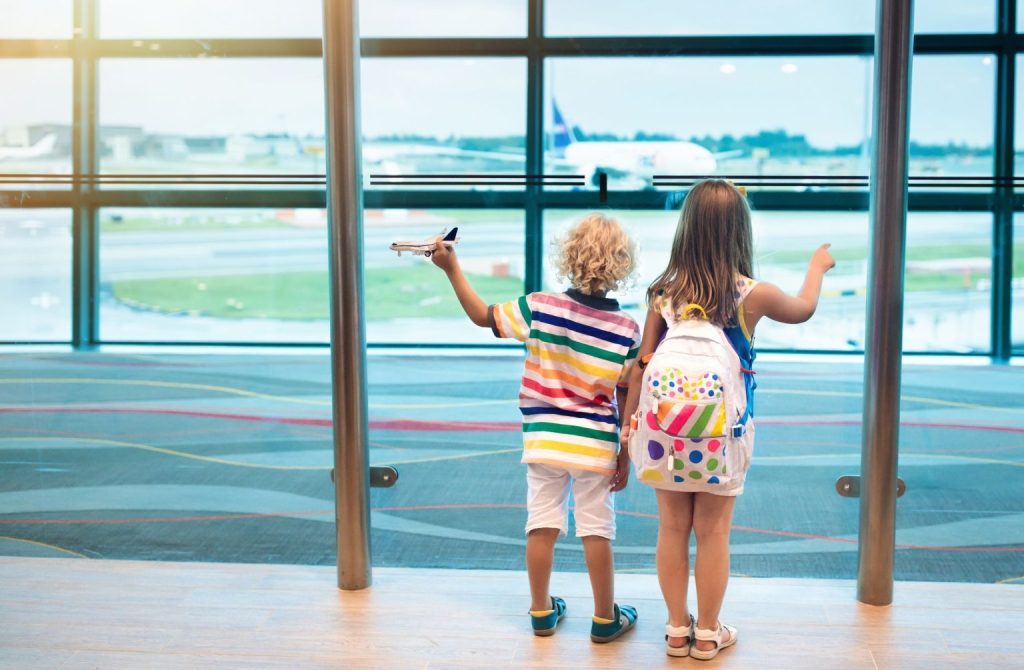For parents, flying with a baby or toddler can pose challenges. However, employing smart tricks and tips can transform it into an enjoyable and manageable escapade.
Tips will make your trip easier.
Prior to the flight:
- Take into account how they behave in other modes of transport to get an idea about their behavior during a flight.
- To share the responsibility and offer support, fly with your partner, a friend or a family member.
- Consider the napping patterns of your child and how long you want to travel when choosing flight times.
- Booking seats in advance is a good idea, as it will ensure the safety and comfort of your baby or toddler.
- If you are traveling with your baby, contact the airline in advance to make a reservation for a bassinet.
- Ask about the empty rows of the check-in counter at the airport to get more room on the plane.
- Bulkhead seats offer more legroom for toddlers and extra space to play.
- For added safety and comfort, pack a stroller that can accommodate a child car seat.
- Air New Zealand offers Sky Couches and Skynest Bunk Beds.
Packing Essentials:
- You should check the restrictions and allowances for cabin baggage on your airline.
- Check with your hotel to see if you can get these essentials.
- Order formula and baby foods in advance from the airport pharmacy to be collected after security.
- A toddler bed can be used to create a sleeping space for the child during the flight.
- Use a stroller to contain your child and make transportation easier.
- You can use a baby carrier to move around with your hands free and soothe your child.
- Travel documents should be easily accessible from the back of your stroller or carrier.
- If you or your child has a spill, make sure to have extra clothes on hand.
- Consider clothing that is easy to breastfeed and comfortable.
- A snoozeshade will create darkness in your baby’s crib or when you arrive.
- To help balance ear pressure, use a water or dummy cup during takeoff and landing.
- Stock up on extras like muslins and dummies, wet wipes for diapers or soiled cloths.
- Consider a changing mat that has a place to store wipes and nappies.
- Pack fruit and other snacks in containers that are peanut-free.
- Water bottles or pouches with air pockets can leak.
- Book in advance the meals for your children to be served on time.
- After your child has finished eating, request that your meal be served.
- Make a grab-bag with the essentials for an easy flight.
- Organise your clothes into clear bags or packing Cubes to improve suitcase organization.
- Bring along toys that will keep children entertained, won’t cause a mess and won’t disrupt other passengers.
- Use child-friendly headsets and download your kids’ favorite shows to a tablet.
- Babys are often fascinated by their environment even without toys.
- A pillow or blanket will add comfort and familiarity.
- Do not forget important medications such as Calpol.
Travel Tips for Airports
- Talk about the trip with your child in advance to create excitement.
- Save time by checking in online and requesting to block the seat adjacent to you.
- Use the assistance of airport staff and fellow passengers to fold down your stroller.
- At the security checkpoint, look for a special lane reserved for families with children.
- Avoid meltdowns caused by hunger.
- When families have the choice, consider boarding before any other option.
- When traveling with your baby, it is important to plan the boarding procedure carefully.

Boarding the flight:
- Wear a back pack to relieve your hands and use a baby carrier.
- Use a backpack to allow your child the freedom of carrying their own things and feeling more engaged in travel.
While the flight:
- Your children’s safety and comfort should be your priority.
- To relieve ear pressure, you can nurse or bottle feed your child during the takeoff and landing.
- Use interactive toys, coloring books and stickers to keep your child entertained.
- Stretching and preventing restlessness can be achieved by walking up and down aisles regularly.
- Reduce noise levels for children by using noise cancelling headphones or earplugs.
- A small pillow or blanket will help your child to sleep in a comfortable environment.
- Prepare for any accidents that may occur by keeping extra clothing and diapers on hand.
- Your children will sense any stress you are experiencing.
Every child is unique, so you should adapt the tips according to your family’s preferences and needs.
By planning ahead, maintaining a positive outlook, and packing a carry-on with the right items, flying with your baby or toddler can be a pleasant experience for all.
